Fall 2024 viewing round-up, part three
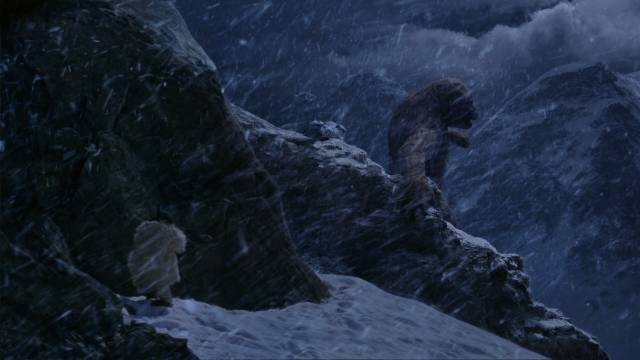
As a subscriber to Vinegar Syndrome, the company’s releases have continued to dominate my viewing, but my second full year of subscription has been somewhat disappointing. I won’t be subscribing again because their programming choices have increasingly diverged from my own interests and tastes. Although in the past few months I’ve watched almost two dozen more disks from the label, I’ll set them aside to mention movies from various other companies which I’ve also been sampling.
Indicator
I have a huge backlog of releases from Indicator which I intend to tackle in the new year after I’ve retired and have more time. Most recently, I’ve watched a couple of their typically well-produced limited editions.
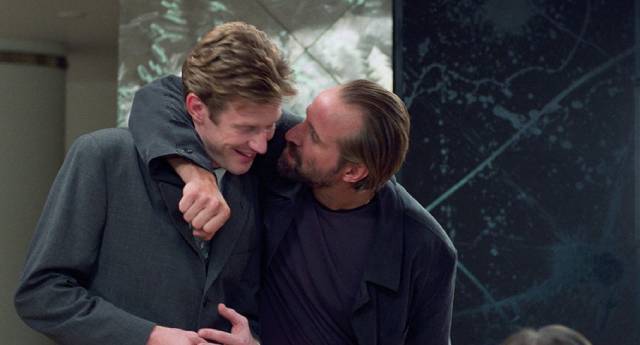
Bruiser (George A. Romero, 2000)
The ’90s weren’t kind to George A. Romero, despite his reputation as a master of independent horror. Following Day of the Dead (1985), the underrated (and under-performing) third part of his on-going zombie saga, he did find backing from a Hollywood studio (Orion) for a pair of adaptations – Monkey Shines (1988) and The Dark Half (1993) – neither of which represented his best work, nor proved to be a particulalrly good experience because of his diminished control over their production. Following the latter, he faced a frustrating seven years, unable to get new projects off the ground. When he finally found backing at the end of the decade, it came from Canal+ in France and Romero left his roots in Pittsburgh to shoot his new film in Toronto.
Bruiser (2000) is in many ways unlike the rest of Romero’s work and it’s tempting to see it as a sign of an enforced break with his past. In contrast to most of his films, it lacks a clear sense of place – as in so many tax shelter movies of the ’70s and ’80s, Toronto is seen as a generic city which might be anywhere (in the States). This odd placelessness is amplified by the casting of British actor Jason Flemyng as an equally unspecific American protagonist. The sense of vagueness is deepened by a script which never quite comes to grips with its central metaphor. Is what we see real or merely a projection of the character’s perception? In disk extras, Romero and producer Peter Grunwald lean towards the latter, but the film provides clear evidence for the former. Perhaps the problem is that, unlike Romero’s other films, Bruiser is overtly metaphorical; it’s critique of a corporate capitalism which obliterates individual identity isn’t presented as subtext – it’s the entire text.

Fleming plays publishing company drone Henry Creedlow, who works for the obnoxiously exploitative Miles Styles (Peter Stormare), who’s having an affair with Henry’s wife Janine (Nina Garbiras), who is fed up with her husband’s lack of ambition. They live in a half-finished mansion perched in a stretch of undeveloped wasteground, adding to Henry’s sense of failure. And one day the psychological pressure reaches a critical point and he snaps. Unseen and unacknowledged by everyone around him, Henry wakes to find his face has become a blank mask, a physical manifestation of anonymity. But paradoxically this empowers him and he begins to strike back at everyone who abuses him – including Janine, his co-worker James (Andrew Tarbet) and eventually Miles. With death surrounding him, Henry falls under police suspicion (genre stalwart Tom Atkins as Detective McCleary), but there’s no clear evidence because surveillance footage from crime scenes show only that faceless mask – belying the idea that the mask is purely a matter of Henry’s self-perception.
There are a lot of things to appreciate in Bruiser – the climax occurs at a rave where The Misfits perform a couple of songs they created for the film; this displays Romero’s skills at building a sequence with carefully chosen details which accumulate through editing to create both mood and suspense. But overall the film gives a fairly impersonal impression.
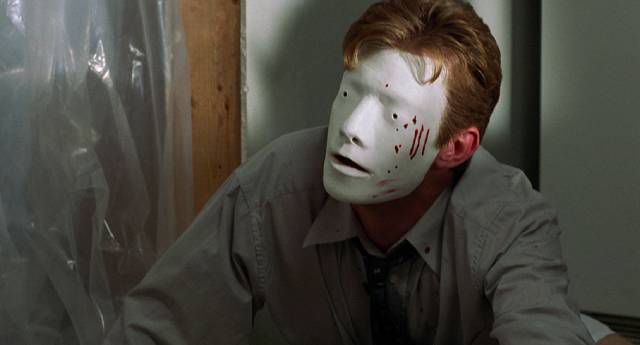
However, Romero enjoyed working in Toronto and relocated there to resume the zombie saga with Land of the Dead in 2005, another film which lacks the locational specifity of his earlier work, but benefits from the return to his well-established zombie apocalypse narrative world.
On a personal note, Bruiser was edited by Miume Jan Eramo, who had initially been the editing mentor at the Canadian Film Centre the year I was there. She left early in the program to take the job and it’s one of my big regrets that this didn’t lead to an opportunity to meet Romero.
The image on the Blu-ray is excellent and the commentary from the original DVD has been carried over, with Romero and producer Grunwald discussing the production and what they were aiming for with the film. There’s also an archival interview with Romero and new interviews with Flemyng, critic Kim Newman, and drummer Dr. Chud who talks about the involvement of The Misfits in the production, with a brief sample of his discarded score. (Not included is Romero’s zombie-themed music video for The Misfits’ “Scream”, which he directed free of charge in exchange for the songs the band contributed to Bruiser.) There’s also an enthusiastic introduction by French critic Jean-Baptiste Thoret who situates the film in Romero’s career, and connects it to Georges Franju’s Eyes Without a Face (1960). I also learned from him that Jason Flemyng is the son of director Gordon Flemyng, who I mostly know from Dr. Who and the Daleks (1965) and Daleks: Invasion Earth 2150 A.D. (1966). As usual with Indicator’s limited editions there’s an 80-page book of new and archival writing about the film.
*
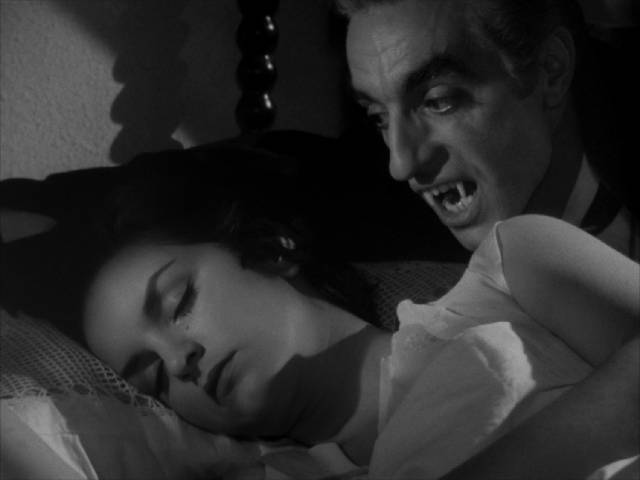
El vampiro/El ataúd del vampiro (Fernando Méndez, 1957/58)
Fernando Méndez’s El vampiro (The Vampire, 1957) was a key film in the resurgence of horror in Mexican cinema in the late-’50s and early-’60s. Shot mostly on sets at Estudios Churubusco, it draws on the classic Hollywood horrors of the ’30s, but also parallels (or even precedes) the Italian Gothic movies which proliferated after the success of Riccardo Freda and Mario Bava’s I vampiri (1957) and, more particularly, Bava’s Black Sunday a couple of years later. Méndez is masterful in his creation of mood, with most of the film occurring at night with studio mist perpetually drifting through the woods and hacienda courtyard where most of the story takes place.
Marta (Ariadne Welter) returns to the home where she grew up to find it falling into ruin, with her aunt Maria Teresa (Alicia Montoya) recently buried in the family crypt and her other aunt, Eloisa (Carmen Montejo), strangely un-aged. Accompanied by a man she met at the railway station, who unknown to her is Doctor Enrique Saldivar (producer Abel Salazar), summoned by her uncle Emilio (Jose Luis Jimenez) to examine Maria Teresa, she finds herself at the centre of a mystery involving the nobleman Duval (Germán Robles), who is actually the vampire Count Karol de Lavud who was buried on the grounds a hundred years earlier and now wants to make Marta his bride.
While not particularly original, the film is full of striking imagery and evocative camera moves, and the cast play their parts with conviction. The sets by art director Gunther Gerszo are wonderfully detailed, with Rosalio Solano’s cinematography adding layers of atmosphere.
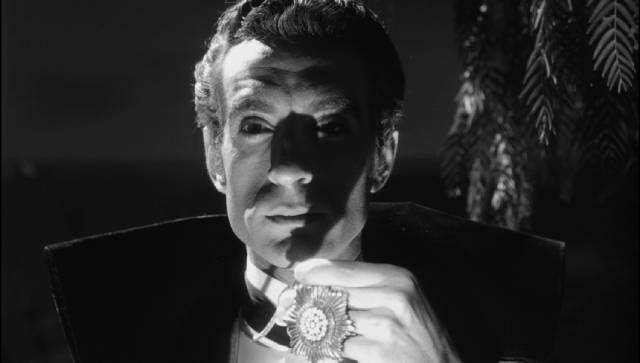
Since El vampiro was a commercial hit, a sequel was quickly put into production, but El ataúd del vampiro (The Vampire’s Coffin, 1958) is less successful. While the original film has an unspecified period – after the opening sequence with the arrival of a train at a rural station, it seems rooted in the past; costumes aren’t modern, only horse-drawn carts and carriages provide transportation – the sequel is set in the present, which comes as something of a surprise after a very Gothic opening scene in which two men steal Count Lavud’s coffin from the crypt as Maria Teresa tries to stop them, and they slide it into an ambulance and drive to the Louis Pasteur Hospital.
Having heard about the vampire from Dr. Saldivar, Doctor Mendoza (Guillermo Orea) has hired the criminal Barraza (Yerye Beirute) to fetch the Count for scientific study. But Barraza inadvertently revives the monster when he pulls the stake out of his heart while trying to steal the jewel-encrusted medallion around his neck. Once returned to life, Lavud enslaves Barraza and uses him to stash the coffin in the cellar of a nearby wax museum while he sets out to resume his pursuit of Marta, who has been working as a nurse at the hospital, though she plans to resume her theatre career.
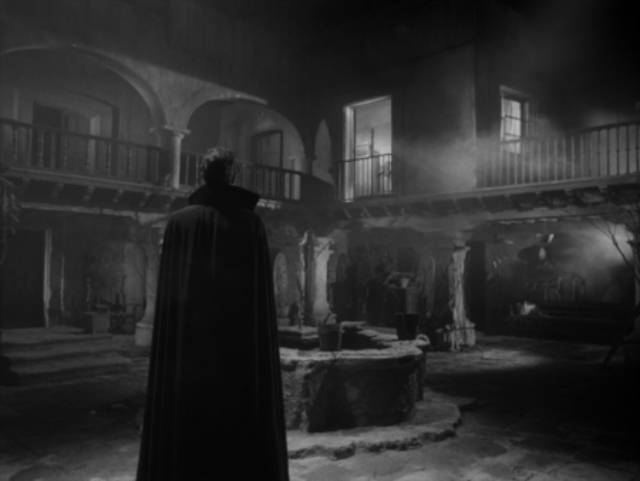
While Gerszo’s sets once again provide opportunities for some striking visuals – this time shot by Victor Herrera (who the next year would shoot Méndez’s finest Gothic movie, The Black Pit of Dr. M [1959]) – The Vampire’s Coffin lacks the distinctive mood of the original film and the problem lies squarely with producer/co-star Abel Salazar who inexplicably decided to mock the material by playing Dr. Saldivar as an incompetent clown, undermining the work of everyone else involved as if he had decided to turn the movie into the equivalent of an Abbott and Costello Meet… comedy without letting anyone else know.
Both films look excellent and the set makes a nice supplement to Indicator’s previous Mexico Macabre box set. El vampiro gets a commentary from Germán Robles himself (recorded in 2007) and each disk has a couple of featurettes – interviews with Salazar’s daughters about their father, programmer Abraham Castillo Flores about Carmen Montejo, critic Roberto Coria about Robles’ vampire roles, novelist Juan Ramón Obón about his father Ramón Obón who co-wrote both films, and film historian Elisa Lozano on production designer Gunther Gerszo. There are also a couple of trailers and an 80-page book of new and archival writing about the films.
*
Umbrella

Sky Pirates (Colin Eggleston, 1986)
Colin Eggleston made an interesting contribution to the wave of Australian genre cinema in the late ’70s with the low-key nature’s-revenge movie Long Weekend (1978), which stands out as the high point of his directing career. That character-based drama was a far cry from Sky Pirates (1986), his biggest production, which attempted to emulate on an inadequate budget the international success of Steven Spielberg’s Raiders of the Lost Ark (1981). With its World War Two setting and leather-jacketed pilot hero, the influences are at times embarrassingly blatant. The story of a prehistoric artefact with the power to warp space and time takes place in settings in Australia and various parts of the South Pacific, leading to a climax on Easter island where remnants of a long-ago alien visitation are buried beneath the famous statues.
The story is perfunctory and disjointed, the characters cartoonish cliches, all steeped in an aura of déjà vu… and yet it’s not un-entertaining and much of the budget went into some impressive stunts and some pretty good special effects which occasionally make it seem more imaginative than it actually is. As derivative imitations of big hits go, it’s actually not too bad – up there with the likes of Star Wars clones like Jimmy T. Murakami’s Battle Beyond the Stars (1980). Umbrella Entertainment have lavished a new 4K transfer on the movie and packed the disk with extras: a commentary, the usual interviews from Mark Hartley’s Not Quite Hollywood (2008), deleted scenes, visual effects test footage, a tribute to co-writer/producer John D. Lamond, and a 41-minute trailer reel with promos for two-dozen Indiana Jones “clones”.
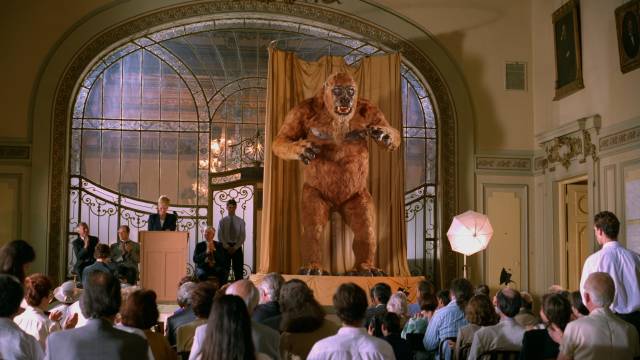
The Primevals (David Allen, 2023)
David Allen began his long career in special effects in his mid-20s with work on what was in effect a hugely ambitious fan film spear-headed by an even-younger Dennis Muren. Equinox (still available in a two-disk set from Criterion released in 2006) was picked up for distribution in 1970 by producer Jack H. Harris, who added some new material to bring it up to feature-length (as he did a few years later with John Carpenter’s student film Dark Star [1974]). Allen, who specialized in stop-motion, went on to a prolific career on both low-budget exploitation and bigger-budget studio pictures before his early death at 54 in 1999. And throughout those three decades, he nurtured a personal project called The Primevals, a tribute to the fantasy films he’d loved since childhood.
I first heard of it when it was given a big cover story in Cinefantastique in 1978 (Volume 8, Number 1). That article covered pre-production of what was announced as a major, big-budget project … but it stalled, occasionally mentioned from time to time over the following decade, becoming something of a legendary unmade epic. Then, having worked on numerous projects for Charles Band, delivering superior work on absurdly small budgets, Allen was given financing by the Full Moon producer in the early ’90s and he finally set about making his dream project. But after shooting most of the live action and completing a lot of the animation, Band’s financial problems shut it down and it remained incomplete at the time of Allen’s death.

Two decades later, some of Allen’s friends who had worked with him on the project, supported by a crowd-funding campaign set up by Band, finally completed the animation based on Allen’s storyboards and, almost thirty years after production began, The Primevals finally premiered at the Fantasia festival in July 2023. Not only does the use of old-school non-digital effects give the impression that the film is an artefact from the past; the entire narrative conception evokes an earlier mode of storytelling. In fact, even at the time Allen shot most of it thirty years ago, it was rooted in the past. Most obviously, the film references – and pays homage to – Ray Harryhausen’s movies from the ’50s and ’60s, with additional echoes of Willis O’Brien and his pioneering stop-motion of the ’20s and ’30s in The Lost World (1925) and King Kong (1933).
The Primevals belongs to the genre of kids’ fantasy-adventure and situates itself in that realm of imagination without condescension or irony. Allen wanted to recreate the child’s sense of wonder he had himself experienced and his film possesses a naive charm – or perhaps innocence would be a more appropriate word. In its most direct reference to Kong, the story opens with the capture of a Yeti in the Himalayas, with the giant creature being brought back to Dr. Claire Collier (Juliet Mills) for study. The creature’s existence vindicates the theory of Matt Connor (Richard Joseph Paul), who bitterly resents having had his PhD thesis rejected by Collier. Despite their personal friction, he’s invited to join her on an expedition to study the Yeti in the wild and, together with a professional hunter (Leon Russom) and a Sherpa guide (Tai Thai), who has personal reasons for animosity towards the Yeti, the team head into the mountains.
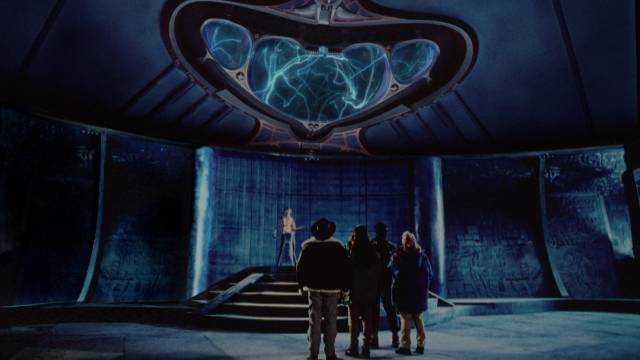
Naturally, they discover far more than they bargained for. Tracking the Yeti, they find their way to a hidden, verdant valley populated by prehistoric animals, a race of proto-humans and, more unexpectedly, a race of reptilian aliens who entertain themselves by pitting various creatures against one another in an arena. But until now they haven’t thrown modern humans into these contests and the addition of the explorers’ intelligence unbalances this closed society’s equilibrium, leading to disaster.
If all the elements packed into the script by Allen and Randall William Cook are familiar and derivative, they never feel stale and the film’s visual imagination gives them all fresh life. Made by an enthusiastic fan of these older effects techniques for like-minded fans, The Primevals is a delight, packed with incident, delivered at a breathless pace. Completed twenty-four years after the death of the artist who conceived it – and began work on it in the late ’70s – it has the air of a lost film rediscovered.
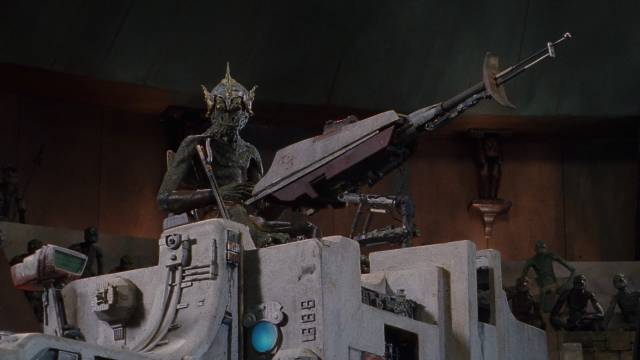
In addition to an excellent transfer, Umbrella’s Blu-ray is packed with extras, some directly addressing Allen’s labour of love (with behind-the-scenes footage showing him at work), as well as various tests, including some from the first attempt in the late ’70s. There are promo reels from 1984 and 1997, put together in hopes of raising funds, but also one from the ’60s when the film had a different conception, with a period setting. In addition, there’s an extended version of the feature in which sequences with unfinished animation are rendered with animated storyboards.
Comments